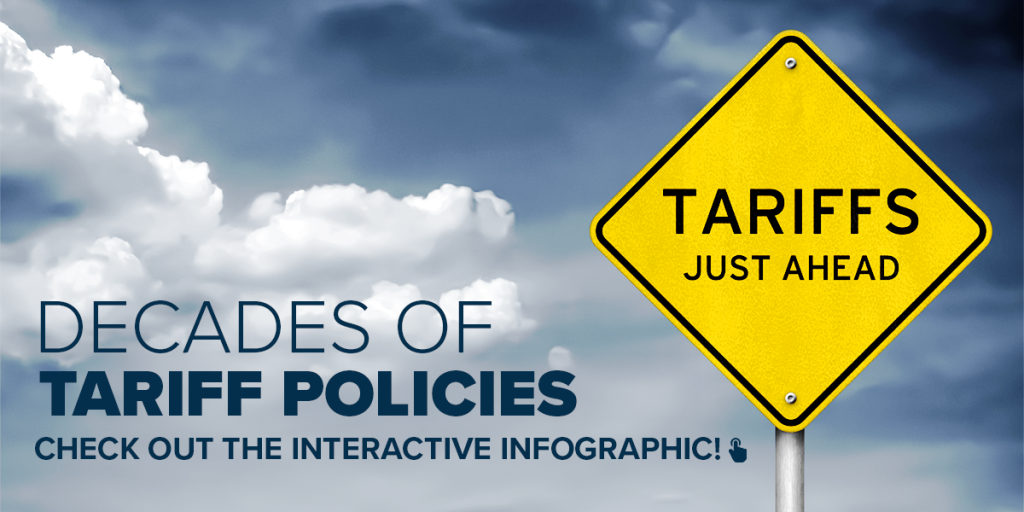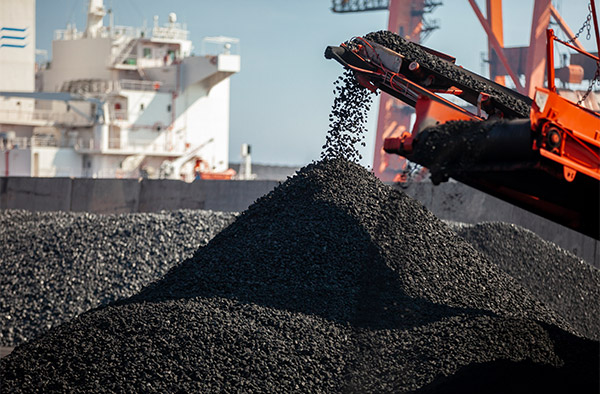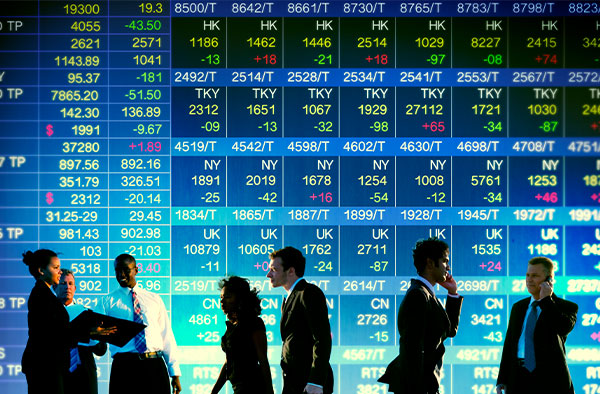

Analysts See Gold at $4,000 as Faith in the U.S. Dollar Tumbles
Gold is hitting records in more ways than one.
In nominal terms, the yellow metal set multiple new all-time highs this week, exceeding $3,300 an ounce for the first time ever on Wednesday. And on an inflation-adjusted basis, gold also notched a new record price, surpassing the longstanding record set in 1980.

There could be further gains in the coming months, if analyst expectations come to fruition. Goldman Sachs sees gold topping out at $3,700 by the end of this year and $4,000 an ounce by mid-2026.
Top Performing Gold Stocks Now Featured in the IBD 50
Gold miners, I’m happy to report, also appear to be back in favor. The IBD 50, Investor’s Business Daily’s flagship screen of growth stocks, now includes about a dozen gold mining names. Companies that were just added to the list include DRDGold, Eldorado Gold, Gold Fields, Randgold Resources, Osisko Gold Royalties, Royal Gold, Triple Flag Precious Metals and Wheaton Precious Metals.
We’re proud to hold shares in 11 of these companies across one or more of our gold equity or resource funds, as of March 31. Below is a comprehensive list.

Worst Start on Record for the Dollar Index Spurs Gold Buying
This gold rally is classic Fear Trade. It comes as investor sentiment has collapsed to its lowest level in three decades, according to April’s BofA Global Fund Manager Survey. Eighty-two percent of participants said they believe the global economy will shrink, marking the most pessimistic reading in the survey’s history.
The value of the U.S. dollar, when measured against a basket of world currencies, has sunk to a three-year low as traders await more details on the fallout from President Donald Trump’s trade policies. The ICE U.S. Dollar Index is down 8% so far in 2025, making this the worst start to a year in the index’s four-decade history, according to the Wall Street Journal.
Granted, a weaker greenback has its advantages: It makes the price of goods being exported out of the U.S. more affordable to foreign buyers, helping exporters.
My concern is the reason why the dollar is on the decline. Foreign central banks have been dumping U.S. debt for a while, but the selling pressure of longer-dated bonds has increased in recent months. In the four months through February, overseas institutions sold a combined net of approximately $90 billion.
Retail Investors Still Missing Out on the Gold Rally
Despite the rally, retail investors are still sorely underexposed. Gold-backed ETF assets currently represent less than 2% of all ETF assets, down from approximately 8% in 2011. Investment in gold ETFs has significantly picked up since February, but holdings are still off by about 19% from their highs in October 2020.

The market share for gold mining ETFs is even lower, representing less than 0.5% of total equity ETFs.
That’s a shame because gold stocks have been among the best bets of the year so far. The NYSE Arca Gold Miners Index, or GDM, has advanced more than 53% through Thursday’s close, far outperforming the S&P 500, which has lost close to 10% over the same period.
Believe it or not, the second-best-performing S&P 500 stock so far this year is Newmont, the world’s largest gold mining company. Newmont is up a little over 50% through April 16, following CVS Health, up nearly 53%.
Analysts have rosy expectations for Newmont’s year ahead. Those polled by FactSet say they project profits to rise 13% to $3.92 per share this year, followed by an 8% rise to $4.23 per share next year.
South African Gold Stocks Break Records in 2025
This rally isn’t limited to U.S.-based gold stocks. South African producers, as measured by the rand-priced FTSE/JSE Precious Metals and Mining Index, hit a new record high as the price of gold has exploded to the upside, crossing above R60,000 per ounce this month for the first time ever.

Many American depository receipts (ADRs) of South African producers have done exceptionally well so far in 2025, with Sibanye Stillwater up about 50%, AngloGold Ashanti and DRDGold both up 93% to 94%, and Harmony Gold up a remarkable 113%.
Gold Stocks Remain Deeply Undervalued Relative to the Market
Just as investors’ portfolios are underexposed to the yellow metal, gold mining stocks look incredibly undervalued compared to the market.
The chart below shows the ratio between the GDM and the S&P 500. You can see that, relative to the S&P, gold stocks have traded in a range-bound pattern going back about 10 years.

So how do mining stocks break out of this pattern? Either gold equities continue to trade up, or the S&P 500 continues to fall (or a combination of the two).
In any case, this could be a good buying opportunity. As always, I recommend a 10% weighting, with 5% in physical gold (bars, coins, jewelry) and the other 5% in high-quality gold stocks.
Interested to learn what gold-focused funds we offer at U.S. Global Investors? Simply email “GOLD” to info@usfunds.com.

Index Summary
- The major market indices finished mixed this week. The Dow Jones Industrial Average lost 1.14%. The S&P 500 Stock Index rose 0.28%, while the Nasdaq Composite fell 0.62%. The Russell 2000 small capitalization index gained 2.69% this week.
- The Hang Seng Composite gained 3.26% this week; while Taiwan was up 1.78% and the KOSPI rose 1.04%.
- The 10-year Treasury bond yield fell 10 basis points to 4.326%.
Airlines and Shipping
Strengths
- The best performing airline stock for the week was Make My Trip, up 10.00%. Respondents to a Morgan Stanley survey believe travel budgets should see a 4% year-over-year increase in 2025 and continued growth in 2026. The results of the survey indicate that budgets in the first half of the year are expected to be up 4.3% year-over-year.
- Spot rates turned up for the first time in 11 weeks on North American routes but continued to trend down on European routes. On North American routes, Morgan Stanley sees a possibility of a short-term uptrend in container spot rates.
- United Airlines reported March-quarter adjusted earnings per share (EPS) of $0.91, ahead of the FactSet consensus of $0.74 and better than recent guidance of the low-end of the company’s initial $0.75 to $1.25 range. The beat versus consensus was primarily driven by better-than-expected unit costs and unit revenue performance, partially offset by higher fuel.

Weaknesses
- The worst performing airline stock for the week was Sun Country, down 13.6%. According to JP Morgan, China’s imposition of a 125% tariff on U.S. imports is resulting in higher costs for maintenance and new aircraft delivery, particularly affecting the existing Boeing fleet and delaying Boeing new aircraft deliveries. This will compel airlines like Air China, China Eastern Airlines, and China Southern Airlines to reassess fleet strategies.
- The most recent container data points, covering the last four weeks, reveal a subdued growth environment and a decrease in year-over-year growth compared to the prior four weeks (1% year-over-year), reports UBS. Additionally, the most recent quarter-to-date figures (covering April 1 to April 12) indicate negative growth of -2% year-over-year, hence also down from the first quarter of 2025.
- In response to recent tariffs by the United States, China has issued an order to its airlines to stop taking deliveries of Boeing aircraft. Beijing has also reportedly told Chinese airlines to withhold purchasing any aircraft-related equipment from American companies, which could weigh on the broader OE and AM sectors, explains RBC.
Opportunities
- Embraer flagged that it expects limited impact from U.S. tariffs on aircraft imports. Embraer’s subsidiary, Eve, plans its first eVTOL test flight in mid-2025, with certification by 2027. Eve’s development costs are projected at US$200-250mn in 2025, according to JP Morgan.
- Shippers moved from a slight net restock last quarter to a sharp destock in FP77, consistent with mid-2023 levels. This is relatively good news for transportation companies, explains Morgan Stanley, as it shows shippers did not pull forward a significant amount of restocking into late 2024, and there is room for more inventory build to come.
- According to Bank of America, if China decides to cancel orders, India may be a potential recipient. Air India could be a candidate for some of the B737 Max aircraft, which could ease its growth constraints.
Threats
- China airline spending could be weak due to corporations’ travel budgets in 2024 lower than in 2023 and 2019, reports UBS, and could drop by 10% year-over-year in 2025. In addition, the trade friction could bring further downside, especially on outbound travel demand.
- U.S. import volumes into the country’s major container ports are expected to drop beginning next month reflecting the rising tariff situation. Imports during the second half of 2025 are now expected to be down at least 20% year-over-year and bring total 2025 cargo volume to a net decline of 15% or more unless the situation changes, according to CIBC.
- According to Bank of America, Frontier cut June/July/August capacity by an average of nearly 13 percentage points. Second quarter schedules are now down 2.6%, in line with the bank’s -3% forecast.
Luxury Goods and International Markets
Strengths
- Moncler Group exceeded expectations in the first quarter, reporting a 1% year-over-year revenue increase to €829 million, up from €818 million in the same period last year. Hermès reported a 7% year-over-year rise in sales for the quarter, outperforming Louis Vuitton, which saw 3% growth over the same period.
- Goldman Sachs reported a robust financial performance in the first quarter, with net revenue of $15.1 billion, earnings per share of $14.12, and a return on equity (ROE) of 16.9%, highlighting the company’s resilient business model.
- Paradise, a gaming company that operates casino facilities in South Korea and Kenya, was the top-performing stock in the S&P Global Luxury sector, posting a 9.46% increase over the past five days. Paradise Co. reported better-than-expected earnings for the first quarter of 2025, with revenue and earnings per share surpassing analyst forecasts.
Weaknesses
- Shares of Louis Vuitton (LVMH) ADRs fell on Monday after the company reported weaker-than-expected group revenue for the first quarter of 2025 compared to the same period last year. The Fashion & Leather Goods division, a core segment of the business, saw the steepest decline with a 5% drop. Following the sell-off, Hermès surpassed LVMH to become the world’s most valuable luxury company by market capitalization.

- Economic sentiment in Germany declined sharply, with the ZEW Economic Sentiment Index dropping 65.6 points to -14.0 in April. In the UK, business confidence turned negative for the first time since 2022. Across the Eurozone, overall economic sentiment fell from 39.8 in March to -18.5 in April, returning to negative territory.
- Shiseido, a Japanese manufacturer and distributor of beauty products, was the worst-performing stock in the S&P Global Luxury Index, dropping by 8.5%. Shares dropped after CEO Ron Gee resigned on Monday.
Opportunities
- The Bank of America luxury research team believes LVMH’s weak first-quarter results mark a temporary slowdown, expecting performance to improve over the remainder of the year. The stock is currently trading at the lower end of its historical price-to-earnings range. While the firm lowered its price target from €750 to €725 due to a reduced earnings forecast, it maintained a Buy rating, citing a potential 35% upside from current levels.
- President Donald Trump said he’s considering temporary exemptions from his 25% tariffs on the automotive industry to give car companies more time to transition to manufacturing in the U.S. The Trump administration, on April 11, exempted many tech products from 125% tariffs on China and a 10% universal reciprocal tariff on imports from other countries.
- Several five-star hotel brands—including Ritz-Carlton, Four Seasons, Aman Resorts, Accor’s Orient Express, and Belmond—are expanding into small luxury cruises to offer exclusive, yacht-like experiences that reflect their signature hospitality. These vessels feature high-end amenities such as private suites, gourmet dining, spas, and curated regional experiences. This marks a broader shift in luxury travel, as hotels look to extend their premium service offerings to the seas and appeal to affluent, experience-driven travelers.
Threats
- UBS has downgraded its growth forecast for China to 3.4% this year, citing the impact of U.S. tariffs—marking the most pessimistic outlook among major banks. Former top Chinese economic official Zhu Guangyao stated that China will only engage in tariff talks with the United States if its leaders show respect toward Beijing.
- Global stock markets are expected to remain volatile due to potential changes or new trade policies that could be announced at any time by the United States and its global trading partners. During this period of uncertainty, businesses struggle to operate effectively and provide guidance in an unpredictable environment.
- Chinese manufacturers on TikTok are exposing the large markups on luxury goods sold in the U.S., showing that many are made in China for a fraction of their retail price. Examples include Birkin bags costing $1,400 to make but selling for up to $38,000, and Lululemon leggings made for $5–6 and sold for $100. These revelations have sparked debate over the real value of luxury items and how branding drives up prices.

Energy and Natural Resources
Strengths
- The best performing commodity for the week was palladium, rising 5.93%. ETFs increased gold holdings for the sixth straight day, while selling 2,340 troy ounces of platinum, but only selling two troy ounces of palladium.
- BHP Group warns that President Donald Trump’s tariff spree could trigger a global economic slowdown and challenge trade flows. Despite the warning, BHP posted a solid quarterly production performance for key commodities including copper and iron ore, with copper production climbing 10% and iron ore output steady at 68.1 million tons.
- China’s March net steel exports increased by 33% sequentially, reversing the decline from their October peak. The run-rate increased to 120 million tons per year, further above Morgan Stanley’s base case of 86 million tons for 2025.
Weaknesses
- The worst performing commodity for the week was natural gas, dropping 8.34%. Rich Kinder, co-founder of Kinder Morgan Inc., dismissed concerns regarding tariffs on US natural gas exports on Kinder Morgan’s earnings call and suggested that the bigger concern is overestimated demand forecasts related to artificial intelligence. Kinder believes that any loss of the Chinese market due to tariffs will be offset by increased U.S. liquified natural gas (LNG) imports from the European Union (EU) and Asia, as these regions aim to reduce trade imbalances and improve their negotiating positions.
- In response to escalating trade tensions, China has imposed export controls on several critical minerals, including tungsten, bismuth and seven rare earth elements. These export restrictions impact various sectors, including electronics, aviation and defense.
- Hot-rolled coil (HRC) steel prices moderated over the past two weeks, with prices declining by about 2% to $925 per ton. The decline can be attributed to lackluster spot activity, as many service centers have stepped to the sidelines and/or are buying on an as-needed basis only due to current demand uncertainty, according to BMO.
Opportunities
- UBS is positive on the outlook for copper long term. Reduced short-term demand following Trump Tariffs has tempered expectations for deficits in 2025 and their short-term price outlook, but will only exacerbate long-term supply challenges. Limited mine supply growth, smelters under pressure and tight scrap sees limited growth in refined supply (2025 <1%). Demand growth is expected to return to 3% compound annual growth rate (CAGR), seeing growing deficits with higher prices required to meet demand.

- The U.S. is considering financing through EXIM and the U.S. International Development Finance Corp for companies in the Democratic Republic of Congo (DRC). This is a tactic that would aim to reduce the impact of China’s blocking exports of critical minerals, especially copper and cobalt, as the DRC is the world’s second-largest source of copper and the world’s largest source of cobalt.
- Fertilizer producer CF Industries’ decision to move ahead with a $4 billion blue ammonia project highlights growing confidence in long-term demand for clean hydrogen-derived fuels, even as policy uncertainty and rising costs due to tariffs cloud the investment landscape. The project signals that major producers are still willing to act ahead of full regulatory clarity on clean hydrogen demand in key markets such as the U.S., EU and Japan, according to Bloomberg.
Threats
- Goldman now forecasts a global aluminum market surplus of 580,000 tons in 2025. This is the result of a downward revision to their global total aluminum demand growth forecast to 1.1/2.3% year-over-year in 2025/2026 (vs. 2.6/2.4% y/y prior) as they expect a hit from weaker global GDP growth.
- The Energy Department is considering dramatic cuts that could halt nearly $10 billion in federal funding for clean-energy projects, including partnerships with Exxon Mobil and Occidental Petroleum. These cuts are part of a broader effort by the Trump administration to shrink the scale of the government, potentially eliminating thousands of DOE jobs and impacting over 250 projects tied to electric vehicle (EV) charging, wave energy and other clean technologies, Bloomberg reports.
- U.S. exports of crude oil and gas to China have dropped 90% with their shifting of their supply lines directly to Russia, the Middle East and Canada; however, tariffs may significantly impact propane and ethane exports for the U.S., which is the biggest producer of these byproducts from the refining of petroleum. China has historically been a major importer of these natural gas liquids (NGLs) for the making of everything from toys to car parts. If a tariff exemption on NGLs is not offered, it could lead to plummeting prices, disrupted supply chains, and financial challenges for U.S. producers, transporters and exporters of NGLs, as China may be forced to shutter petrochemical plants or find alternative sources from Qatar and the United Arab Emirates.
Bitcoin and Digital Assets
Strengths
- Of the cryptocurrencies tracked by CoinMarketCap, the best performer for the week was Raydium, rising 37.68%.
- Bitcoin mining firm CleanSpark announced an increase to the firm’s credit facility with cryptocurrency platform Coinbase Global to $200 million. The credit facility was provided by Coinbase through the platform’s Bitcoin-collateralized lending program, according to the CEO and reported by Bloomberg.
- President Donald Trump signed legislation to block an IRS rule that would have forced some cryptocurrency brokers to provide tax information on transactions conducted on their platforms, reports Bloomberg. The repeal of the rule will result in nearly $4 billion in taxes the IRS will not take from taxpayers over a decade.
Weaknesses
- Of the cryptocurrencies tracked by CoinMarketCap, the worst performer for the week was Mantra, down 89%.
- Bitcoin’s correlation to tech stocks has strengthened again, while crypto advocates had been quick to point out that the tokens aren’t materially impacted by tariffs. Unlike many of the companies whose shares make up the benchmark equity indexes. Still, the macro-economic concerns are now dragging down most markets, writes Bloomberg.

- Michael Saylor’s MicroStrategy will report an unrealized $5.9 billion loss in the first quarter due to a new accounting rule requiring digital assets to be valued at market prices. Its Bitcoin holdings, valued at $41.8 billion, fell by nearly $5 billion following a 12% drop in Bitcoin’s price, writes Bloomberg.
Opportunities
- Auradine, a U.S.-based Bitcoin mining computer maker, has closed a $153 million funding round from investors including Samsung Catalyst Fund and Qualcomm Ventures, Bloomberg reports. The funding comes as Chinese competitors face increasing scrutiny and tariffs imposed by the Trump administration, prompting U.S.-based mining companies to seek domestic alternatives.
- Crypto exchange OKX is expanding in the U.S. just weeks after agreeing to pay half a billion dollars to settle charges brought by local authorities. The company said it will launch its centralized trading platform and self-custody Web3 wallet in the U.S., writes Bloomberg.
- Michael Saylor’s Strategy purchased $285.8 million more of Bitcoin last week, taking advantage of large price swings in the company’s common shares. The purchase increased the firm’s holdings of Bitcoin to around $45 billion, which is about 2.5% of all the 21 million tokens slated to be issues, according to Bloomberg.
Threats
- A 45-year-old Pennsylvania man is facing up to six years in prison after failing to disclose the sale of millions of dollars of Ethereum blockchain. During the NFT frenzy, the DOJ statement says Wilcox sold 62 “punks” for over $7.4 million in 2021, Bloomberg reports, and another 35 for nearly $5 million in 2022.
- U.S. President Trump unveiled a punitive reciprocal tariff plan, imposing duties on Thailand, Indonesia, and Malaysia—impacting crypto mining machines. To avoid the tariffs, companies like Sealion Cargo chartered planes and coordinated truck and barge shipments to move $330 million worth of equipment from Southeast Asia to the U.S. before the April 9 deadline, writes Bloomberg.
- A large amount of a meme coin, first debuted by President Donald Trump, will be released on Thursday allowing holders to make the coins available for trading. The release of these coins has sparked concerns about the potential impact on the market, writes Bloomberg, with some analysts warning that it could lead to a “dump” and a decrease in price.

Defense and Cybersecurity
Strengths
- Germany’s antitrust authority approved KNDS’ acquisition of a 25%+1 stake in RENK Group, a key supplier of gear units for military vehicles. The move reinforces vertical integration within Europe’s land defense sector while preserving fair market access for other system manufacturers.

- Rheinmetall expects up to €300 billion ($342 billion) in orders over the next five years, driven by surging global defense budgets. The company is doubling U.S. sales and expanding artillery production in Germany to meet unprecedented demand.
- The best performing stock in the XAR ETF this week was Byrna Technologies, rising 21.47%. The company reported first-quarter revenue and EBITDA that beat estimates, alongside the opening of three new retail stores and a fourth launching on April 10.
Weaknesses
- Nvidia is under pressure following a U.S. ban on H20 AI chip exports to China, resulting in a projected $5.5 billion hit from canceled orders and inventory write-downs. The company also faces antitrust scrutiny in both the U.S. and China, compounding investor concerns. With a heavy reliance on AI and data center revenues, Nvidia remains highly exposed to sudden regulatory shifts.
- NASA’s proposed budget cut from $7.3 billion to $3.9 billion may jeopardize key programs tied to private contractors such as Leidos. A reduction of this scale could weaken the commercial space and dual-use defense ecosystem in the coming years.
- The worst performing stock in the XAR ETF this week was Loar Holdings, declining 3.69%, due to volatility in the market.
Opportunities
- Sweden’s request to sell up to 12 Gripen fighters to Peru and four GlobalEye AEW&C aircraft to Denmark highlights growing demand for NATO-standard air platforms. It also reflects deepening Nordic defense cooperation following Hungary’s approval of Sweden’s NATO membership.
- Rocket Lab has been selected for participation in both the U.S. Air Force’s $46 billion Enterprise-Wide Agile Acquisition Contract and the U.K.’s hypersonic development framework. This reinforces the company’s position as a key player in space-based and high-speed defense applications.
- Thales reported successful trials of the UK-developed RapidDestroyer system, which neutralized drone swarms using directed RF energy. The system could see wider deployment as drone threats escalate across modern battlefields.
Threats
- The Pentagon’s abrupt cancellation of $5.1 billion in IT and consulting contracts, including deals with Accenture and Deloitte, has triggered sector-wide layoffs and investor uncertainty. While aimed at cutting waste, the transition could temporarily delay cybersecurity upgrades and cloud integration.
- The geopolitical environment remains volatile, with the U.S. and Iran entering talks focused on limiting uranium enrichment and missile capabilities. Persistent instability in the Middle East continues to raise operational risks for defense contractors with regional exposure.
- The expiration of the 30-day ceasefire between Russia and Ukraine on April 16 has reignited tensions, with Ukrainian officials warning of imminent strikes on critical energy infrastructure as frontline clashes intensify.
Gold Market
This week gold futures closed at $3,329.10, up $84.50 per ounce, or 2.60%. Gold stocks, as measured by the NYSE Arca Gold Miners Index, ended the week higher by 3.75%. The S&P/TSX Venture Index came in up 3.65%. The U.S. Trade-Weighted Dollar fell 0.66%.
Strengths
- The best performing precious metal for the week was palladium, up 5.93%. ETFs increased gold holdings for the sixth straight day, while selling 2,340 troy ounces of platinum, but only selling two troy ounces of palladium.
- China has seen a surge in gold trading volumes on the Shanghai Futures Exchange as Sino-U.S. trade tensions rise, with investors seeking safety amid a potential new trade war. This buying frenzy has pushed prices to a premium over international prices.
- Gold hit a new record high on April 16, as the Trump administration pressed ahead with probes that could broaden the U.S.’s sweeping trade war. The precious metal has rallied by more than a fifth this year as the worsening trade war has damped prospects for global growth, eroded trust in usually safe U.S. assets and roiled financial markets.

Weaknesses
- The worst performing precious metal for the week was silver, but still up 1.93%. ETFs increased their silver holdings by 3 million ounces on April 16. A gold/silver cross at 100 on April 15 indicates potential global recessionary risks, as similar spikes have historically preceded U.S. recessions and Federal Reserve easing cycles.
- Allied Gold announced that it is not proceeding with the previously announced C$157 million private placement equity financing with the UAE-based investment fund Ambrosia Investment Holding as certain conditions were not secured. Allied, in turn, came to market to raise C$80 million to fund its optimization and growth initiatives. It is interesting to note that Allied Gold’s largest shareholder, Orion Mine Finance, with 38 million shares or 11.60% of the company, sold down 15 million shares concurrent with the offering.
- Kinross Gold announced the temporary suspension of Tasiast mill operations (23% of NAV / 26% of EBITDA), following a fire that occurred April 14. Kinross does not expect to change its guidance for Tasiast, given the fire was localized to the SAG discharge area and critical spare parts are available on site.
Opportunities
- Peter Schiff anticipates Newmont Corp. will surpass $100 per share amidst rising gold prices, criticizing UBS’s upgrade as insufficient. Schiff views UBS’s analysis as flawed, reflecting Wall Street’s underestimation of precious metals’ potential amid a favorable gold macro-outlook, while technical analysis indicates a bullish trend for Newmont’s stock. Similarly, CIBC writes that they expect the current gold regime to push free cash flow yield up, especially for the senior group of gold producers, which CIBC believes will show strong free cash flow growth, calling an average free cash flow yield estimate for the senior group at 6.6% by year-end.
- Gold’s recent rally, up over 60% since the start of 2024, is small compared to the rally in 1979-80, where it increased three to four-fold in a year. While similar factors are in play now, such as persistent inflation and a reordering of the global financial system, gold’s potential isn’t limited, Bloomberg reports.
- Goldman Sachs Group Inc. and UBS Group AG issued another round of bullish calls for gold, with stronger-than-expected central bank demand and the metal’s role as a hedge against recession and geopolitical risks underpinning expectations for even higher prices in 2025. Goldman analysts, including Lina Thomas, now see gold rallying to $3,700 an ounce by the end of this year, with prices set to hit $4,000 an ounce by mid-2026, while UBS strategist Joni Teves pointed to $3,500 an ounce by December 2025.
Threats
- The government of Ghana has instructed Gold Fields to cease operations and vacate the Damang lease area by April 18 on expiry of the lease. They had applied for an extension of the Damang lease in December, and the Minerals Commission of Ghana rejected the application, according to Bloomberg. In addition, the newly elected Ghana presidential administration issued comments last weekend outlining a significant shift in mining policy to prioritize national interests. The news has potential negative implications for foreign mining companies in the country, including Newmont (10% of NAV; 12% of EBITDA), and its pending Akyem asset sale, as well as AngloGold (23% of NAV; 20% of EBITDA), according to RBC. One big highlight is that they are giving foreign traders until May 1 to leave its gold trading market.
- Mali shut Barrick Gold’s office in its capital and threatened to take over its gold mine, the company said. Mali warned it would place Barrick’s shuttered Loulo-Gounkoto mine under provisional administration unless the mine was reopened and tax payments were made, Barrick said in a statement Tuesday.
- Niger has reinforced its military presence along the border with Burkina Faso to counter escalating attacks by jihadist groups, which have displaced local populations and heightened regional insecurity. This move is part of a broader effort by Niger, Burkina Faso and Mali to form a unified force against terrorism in the Sahel States. The increasing tensions, militarization and ongoing violence threaten Burkina Faso’s gold mining industry, potentially disrupting operations for mining operations such as IAMGOLD (~58% of gold production in Burkina Faso), Fortuna (Mana mine and other assets), and B2Gold (exposure to several gold projects in the country).


U.S. Global Investors, Inc. is an investment adviser registered with the Securities and Exchange Commission (“SEC”). This does not mean that we are sponsored, recommended, or approved by the SEC, or that our abilities or qualifications in any respect have been passed upon by the SEC or any officer of the SEC.
This commentary should not be considered a solicitation or offering of any investment product. Certain materials in this commentary may contain dated information. The information provided was current at the time of publication. Some links above may be directed to third-party websites. U.S. Global Investors does not endorse all information supplied by these websites and is not responsible for their content. All opinions expressed and data provided are subject to change without notice. Some of these opinions may not be appropriate to every investor.
Holdings may change daily. Holdings are reported as of the most recent quarter-end. The following securities mentioned in the article were held by one or more accounts managed by U.S. Global Investors as of (03/31/2025):
United Airlines
Boeing
Air China
Embraer
Frontier Group Holdings
LVMH
Hermes
Goldman Sachs
Moncler Group
Alamos Gold Inc.
Triple Flag Precious Metals Co.
Royal Gold Inc.
DRDGold Ltd.
Eldorado Gold Corp.
Osisko Gold Royalties Ltd.
Newmont Corp.
Wheaton Precious Metals Corp.
Gold Fields Ltd.
Agnico Eagle Mines Ltd.
Harmony Gold Mining Co. Ltd.
AngloGold Ashanti Plc
BHP Group Inc.
Exxon Mobil Corp.
Allied Gold Corp.
Kinross Gold Inc.
IAMGOLD Corp.
Fortuna Mining Corp.
B2Gold Corp.
*The above-mentioned indices are not total returns. These returns reflect simple appreciation only and do not reflect dividend reinvestment.
The Dow Jones Industrial Average is a price-weighted average of 30 blue chip stocks that are generally leaders in their industry. The S&P 500 Stock Index is a widely recognized capitalization-weighted index of 500 common stock prices in U.S. companies. The Nasdaq Composite Index is a capitalization-weighted index of all Nasdaq National Market and SmallCap stocks. The Russell 2000 Index® is a U.S. equity index measuring the performance of the 2,000 smallest companies in the Russell 3000®, a widely recognized small-cap index.
The Hang Seng Composite Index is a market capitalization-weighted index that comprises the top 200 companies listed on Stock Exchange of Hong Kong, based on average market cap for the 12 months. The Taiwan Stock Exchange Index is a capitalization-weighted index of all listed common shares traded on the Taiwan Stock Exchange. The Korea Stock Price Index is a capitalization-weighted index of all common shares and preferred shares on the Korean Stock Exchanges.
The Philadelphia Stock Exchange Gold and Silver Index (XAU) is a capitalization-weighted index that includes the leading companies involved in the mining of gold and silver. The U.S. Trade Weighted Dollar Index provides a general indication of the international value of the U.S. dollar. The S&P/TSX Canadian Gold Capped Sector Index is a modified capitalization-weighted index, whose equity weights are capped 25 percent and index constituents are derived from a subset stock pool of S&P/TSX Composite Index stocks. The NYSE Arca Gold Miners Index is a modified market capitalization weighted index comprised of publicly traded companies involved primarily in the mining for gold and silver. The S&P/TSX Venture Composite Index is a broad market indicator for the Canadian venture capital market. The index is market capitalization weighted and, at its inception, included 531 companies. A quarterly revision process is used to remove companies that comprise less than 0.05% of the weight of the index, and add companies whose weight, when included, will be greater than 0.05% of the index.
The S&P 500 Energy Index is a capitalization-weighted index that tracks the companies in the energy sector as a subset of the S&P 500. The S&P 500 Materials Index is a capitalization-weighted index that tracks the companies in the material sector as a subset of the S&P 500. The S&P 500 Financials Index is a capitalization-weighted index. The index was developed with a base level of 10 for the 1941-43 base period. The S&P 500 Industrials Index is a Materials Index is a capitalization-weighted index that tracks the companies in the industrial sector as a subset of the S&P 500. The S&P 500 Consumer Discretionary Index is a capitalization-weighted index that tracks the companies in the consumer discretionary sector as a subset of the S&P 500. The S&P 500 Information Technology Index is a capitalization-weighted index that tracks the companies in the information technology sector as a subset of the S&P 500. The S&P 500 Consumer Staples Index is a Materials Index is a capitalization-weighted index that tracks the companies in the consumer staples sector as a subset of the S&P 500. The S&P 500 Utilities Index is a capitalization-weighted index that tracks the companies in the utilities sector as a subset of the S&P 500. The S&P 500 Healthcare Index is a capitalization-weighted index that tracks the companies in the healthcare sector as a subset of the S&P 500. The S&P 500 Telecom Index is a Materials Index is a capitalization-weighted index that tracks the companies in the telecom sector as a subset of the S&P 500.
The Consumer Price Index (CPI) is one of the most widely recognized price measures for tracking the price of a market basket of goods and services purchased by individuals. The weights of components are based on consumer spending patterns. The Purchasing Manager’s Index is an indicator of the economic health of the manufacturing sector. The PMI index is based on five major indicators: new orders, inventory levels, production, supplier deliveries and the employment environment. Gross domestic product (GDP) is the monetary value of all the finished goods and services produced within a country’s borders in a specific time period, though GDP is usually calculated on an annual basis. It includes all private and public consumption, government outlays, investments and exports less imports that occur within a defined territory.
The S&P Global Luxury Index is comprised of 80 of the largest publicly traded companies engaged in the production or distribution of luxury goods or the provision of luxury services that meet specific investibility requirements.
The ZEW Economic Sentiment Index is a survey-based indicator reflecting the economic outlook of financial analysts and experts.
The FTSE/JSE Precious Metals & Mining Index is a South African stock market index that tracks the performance of companies primarily involved in precious metals and mining. The ICE U.S. Dollar Index (USDX) futures contract is a leading benchmark for the international value of the US dollar and the world’s most widely-recognized traded currency index. The IBD 50 is a weekly, computer-generated stock index published by Investor’s Business Daily (IBD) that identifies the top 50 growth stocks based on fundamental and technical indicators.































